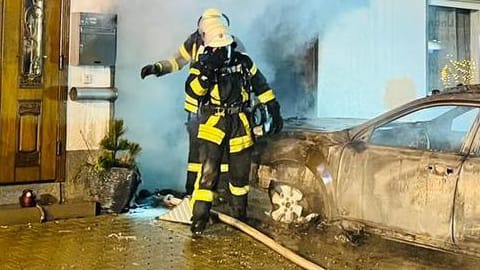Join the team Mariusz Wdowczyk, President of ARP E-VehiclesAnd also: Szymon Byliński, Ministry of Climate, Rafał Kręcisz, National Environmental Protection and Water Management Fund, Alexander Rajsch, Polish Alternative Fuels Association, Piotr Puchalski, mLeasing, Bartosz Widomski of Kross Rental and Pawe Wideł, Stellantis, Leviathan Union.
conducted moderation Przemyslav Byakovsky, Ziluna Entrea
During the discussion, the participants discussed the current status of electronic vehicles on Polish roads, alternative fuels and the possibilities of using electric mobility, both in commercial and private activities, as well as in public transport. The interlocutors had no doubt that there was a departure from fossil fuels and discussed the state of Poland’s green infrastructure.
The future of alternative fuels
Marius and Dovcic Optimistic about the issue of alternative fuels in urban transport:
Mass public transport is ahead of what is happening in passenger traffic. This is the result of the support programs. Without them, local governments and operating companies would not be able to afford to purchase public transportation.
There are currently 720 electric buses on Polish roads, and by mid-2022 there will be 850.

The president of ARP-Vehicles also spoke about the government’s Electric Mobility Support Programs:
The National Environmental Protection and Water Management Trust administers the second edition of the Green Public Transport Program, which has been an overwhelming success. Large urban centers dominated the first version, but the second version shows that green public transport is already leaving the agglomeration and developing in a sustainable way in places where there was no opportunity for such development until now.
Is Poland keeping pace with the race of electric mobility projects? Do we have a chance to be in the lead?
Poland is an absolute leader in Europe when it comes to the production of public transport. Suffice it to say that the main bus manufacturers are here, such as Scania in Słupsk, Volvo in Wrocław, MAN in Starachowice or Solaris Bus & Coach in Bolechowo. However, apart from Autosan, the ARP EV is the only Polish producer of electric buses – explains Mariusz Wdowczyk. – We also have an ARP startup, which I am honored to represent. And this is a good direction, because electric mobility has to be a flywheel and can be a great catalyst for the economy. This is also evidenced by European examples. A year ago, on March 15, Boris Johnson announced the National Bus Strategy – a national program to replace the regional and supra-regional bus fleet with a British fleet. It highlights 3 elements: the bus must be 100% UK built, 80% of the parts used on this bus must come from the UK and the construction must come from the UK. In fact, this trend in building an economy based on electric mobility is Europe realized.

Electric buses around the world
The paradigm of thinking about cities has gradually changed for several decades. The attractiveness of urban centers increases their population density, which also translates into increased vehicular traffic and low-emissions pollution, which is particularly harmful to health. Therefore, modern cities are moving towards promoting public transportation and zero-emission vehicle movement. Electric buses reduce pollution from the transportation sector, contribute to the creation of a pro-environmental image of urban centers and encourage city residents to use public transportation, reducing road traffic. The absence of exhaust fumes allows for greater flexibility in creating an urban space, for example by defining stops within buildings. An additional advantage is the reduction of noise pollution by these vehicles and lower operating costs.
Interestingly, China is the world leader in the development of zero-emission public transport, with up to 99% of the world’s electric bus fleet used on the roads.
Electric buses are a growing and dynamic global trend. According to BloombergNEF forecasts, by 2040, electric vehicles will make up 67% of the global city bus fleet.

As we learned from elektrobilni.pl, the number of electric buses in Poland is steadily increasing, and more and more municipalities are investing in an emission-free fleet. According to August 2020 data, Poland ranks fifth in Europe in terms of the number of e-buses used.
ARP E-Vehicles – Polish technological thought in electric mobility
Designing an electric car is a plan that will last for years. History of ARP E-Vehicles Sp. z oo arrives at RAFAKO SA. And from this company, ARP acquired, by purchasing a subsidiary, a construction and technological project consisting of the development, adoption and serial production of an innovative electric bus.
This is how PILEA was created – the country’s first underground battery bus. Its advantages have been improved over the years of operation, taking into account the latest needs and trends. The PILEA bus is a low-floor bus in its entire length, with no cross-grade steps. One of the latest PILEA models, it is 8.6 meters long, has a range of more than 400 kilometers on a single charge and can carry up to 65 passengers, and the 10-meter version of the bus is completely unparalleled in that it can take up to 85 passengers. passengers on board, which significantly exceeds the capabilities of a 12-meter maxi bus.


Partner materials: TOGETAIR 2022
Rate our article quality:
Your feedback helps us create better content.

“Music specialist. Pop culture trailblazer. Problem solver. Internet advocate.”





